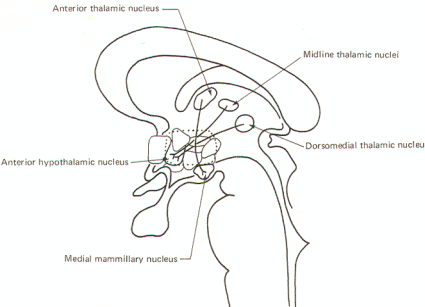
Another study found (by using Fos immunoreactivity, which is generally known for providing information on the sites of action of various stimuli) that there is not only an increase in fos immunoreactivity in the orexin neurons but that this increase also coincides with the increase in orexin A-induced metabolic rate in the dark cycle compared with that of the light cycle. This stimulation appeared to be higher during the dark cycle when compared with that of the light cycle in mice, indicating that circadian differences of orexin A increase/influence the metabolic rate. 20 The same study also microfused orexin into the third ventricle, resulting in stimulation of the metabolic rate. When comparing the energy expenditure between orexins A and B, the very first study conducted on the correlation between energy expenditure and orexins revealed that not only did orexin increase energy expenditure, but it also showed that orexin B did not increase the metabolic rate as much as orexin A did. Randeva, in Handbook of Biologically Active Peptides (Second Edition), 2013 Energy Expenditure Classic studies that have found that electrical stimulation of LH alters taste tuning in the PBN and NST of anesthetized rodents further support the importance of this area in modulating taste. Studies manipulating LH circuits while recording neural activity in taste regions of alert animals under different levels of hunger and satiety will be necessary to fully understand the role of the LH in taste processing. However, unlike the other limbic areas projecting to taste regions, the LH may be more involved in regulating processing of hedonic value and expectations depending on the energy requirements of the animal. With regard to the LH's role in modulating the central processing of taste, it is likely that the LH sends information related to reward and anticipatory cues to the GC and taste brainstem. The function of the LH in feeding and ingestive behaviors has been studied extensively, and the subject is beyond the scope of this chapter. Two groups of neurons were described: neurons with phasic responses, preferentially activated by palatable tastants, and neurons with more prolonged responses, more strongly modulated by aversive tastants. Careful analysis of the time course of firing activity revealed that after an initial (i.e., the first 250 ms) nonspecific response to taste delivery, LH neurons begin to encode palatability ( Li et al., 2013). A neuron that is excited by sucrose is also likely to be excited by the cue predicting sucrose as opposed to the cue predicting quinine. Responses to cues are associative and are generally coherent in sign with responses to rewards ( Schwartzbaum, 1988). Neurons excited by rewards are located in the caudal portion of the LH, while neurons in the rostral portion appear to be biased toward aversive stimuli ( Schwartzbaum, 1988). Pioneering work has demonstrated that neurons in the LH respond to palatable and aversive stimuli and to cues that predict them ( Norgren, 1970 Schwartzbaum, 1983 Nakamura et al., 1989 Yamamoto et al., 1989). LH connections with the gustatory system are reciprocal, indeed different groups of neurons in the LH send orexinergic projections to GC and GABAergic projections to the PBN ( Wu and Palmiter, 2011).Īctivity in the LH is modulated by multiple events related to feeding: hunger and satiety change the firing rates of neurons in the LH ( Burton and Jones, 1976 Sternson et al., 2013). Afferents to the LH also come from frontal cortices and from the amygdala ( Norgren, 1976 Niu et al., 2010 Tokita et al., 2010 Berthoud and Münzberg, 2011). With regard to taste and chemosensation, the LH receives projections from the PBN, GC, olfactory cortex, and other olfactory areas ( Niu et al., 2010 Tokita et al., 2010 Berthoud and Münzberg, 2011).

It receives inputs from multiple sensory, cortical, limbic, and interoceptive regions ( Scott and Pfaffmann, 1967 Norgren, 1970 Scott and Leonard, 1971 Castro et al., 2015). The LH, a zone of the hypothalamus that contains multiple subnuclei, plays a central role in controlling energy balance and regulating feeding behaviors ( Stuber and Wise, 2016). Roberto Vincis, Alfredo Fontanini, in Handbook of Clinical Neurology, 2019 Lateral Hypothalamus


 0 kommentar(er)
0 kommentar(er)
